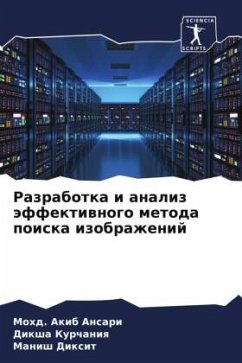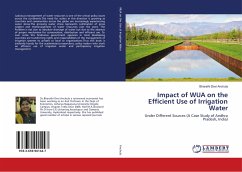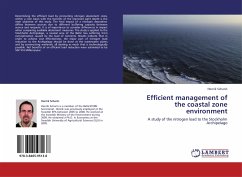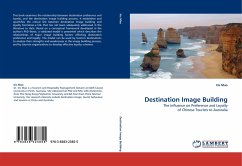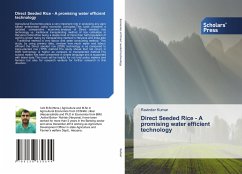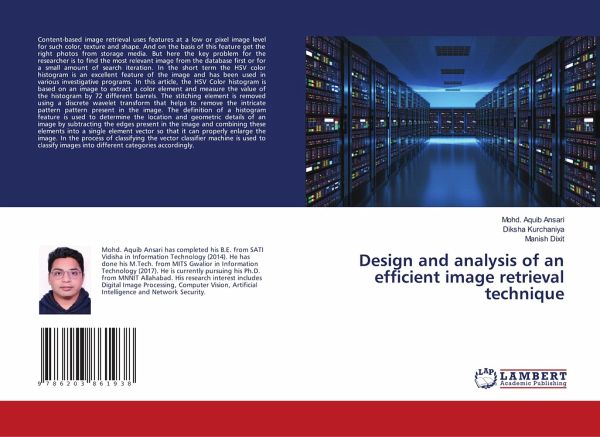
Design and analysis of an efficient image retrieval technique
Versandkostenfrei!
Versandfertig in 1-2 Wochen
36,99 €
inkl. MwSt.

PAYBACK Punkte
18 °P sammeln!
Content-based image retrieval uses features at a low or pixel image level for such color, texture and shape. And on the basis of this feature get the right photos from storage media. But here the key problem for the researcher is to find the most relevant image from the database first or for a small amount of search iteration. In the short term the HSV color histogram is an excellent feature of the image and has been used in various investigative programs. In this article, the HSV Color histogram is based on an image to extract a color element and measure the value of the histogram by 72 diffe...
Content-based image retrieval uses features at a low or pixel image level for such color, texture and shape. And on the basis of this feature get the right photos from storage media. But here the key problem for the researcher is to find the most relevant image from the database first or for a small amount of search iteration. In the short term the HSV color histogram is an excellent feature of the image and has been used in various investigative programs. In this article, the HSV Color histogram is based on an image to extract a color element and measure the value of the histogram by 72 different barrels. The stitching element is removed using a discrete wavelet transform that helps to remove the intricate pattern pattern present in the image. The definition of a histogram feature is used to determine the location and geometric details of an image by subtracting the edges present in the image and combining these elements into a single element vector so that it can properly enlarge the image. In the process of classifying the vector classifier machine is used to classify images into different categories accordingly.






